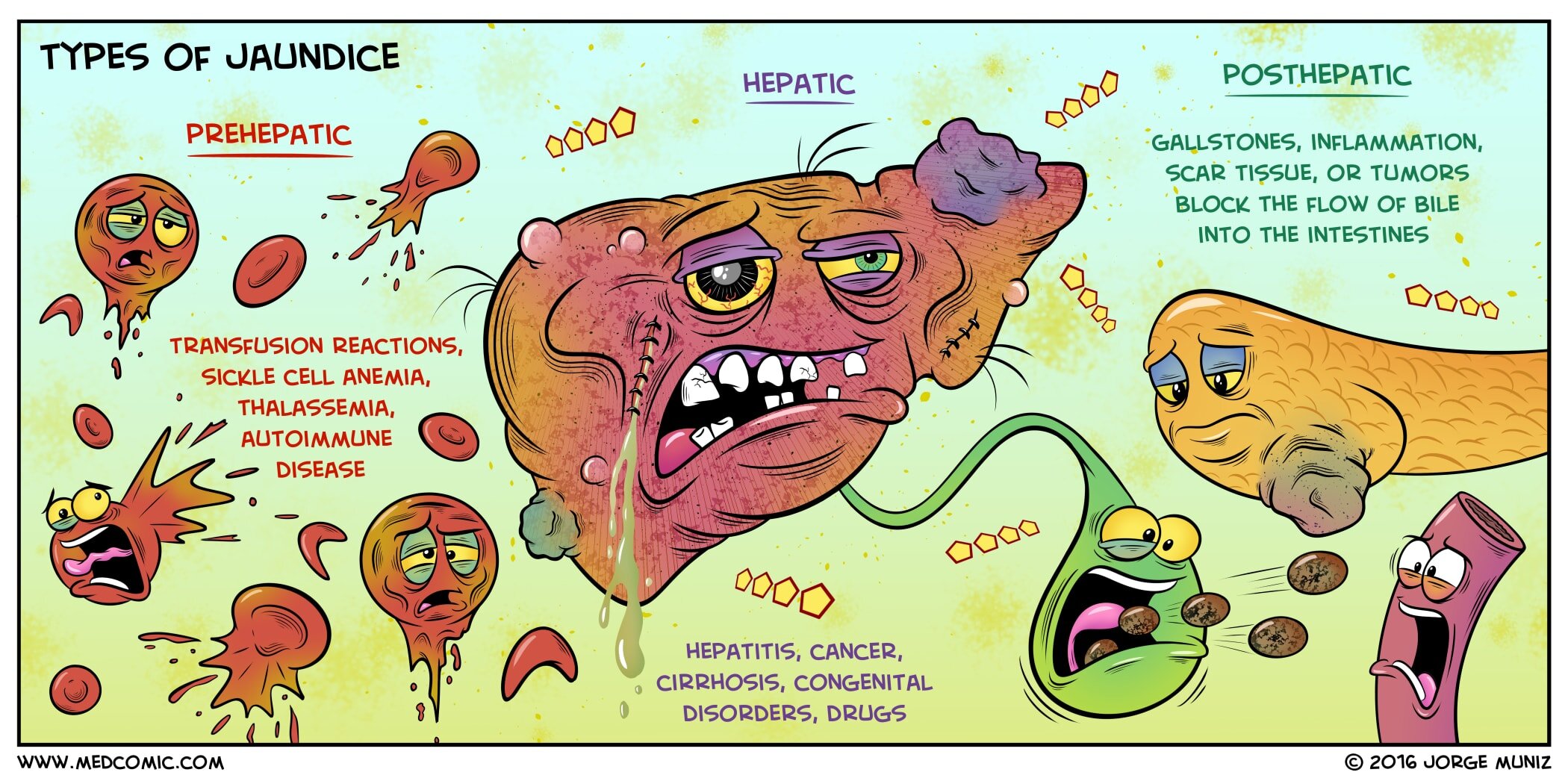Types of Jaundice
Jaundice is a yellow discoloration of the skin and mucous membranes caused by an excess accumulation of bilirubin in the blood. Bilirubin (a tetrapyrrole) is a product of red blood cell (RBC) breakdown. Jaundice becomes visible when the bilirubin level is approximately 2 to 3 mg/dL.
The three main types of jaundice are prehepatic, hepatic, and posthepatic:
Prehepatic (hemolytic) jaundice occurs when RBC lysis exceeds the liver’s capacity to conjugate bilirubin. Causes include transfusion reactions, sickle cell anemia, thalassemia, and autoimmune disease. Large amounts of unconjugated bilirubin accumulate in the blood.
Hepatic jaundice results from hepatocyte dysfunction which limits the uptake and conjugation of bilirubin. This may occur due to hepatitis, cancer, cirrhosis, congenital disorders, and drugs. There is a rise in the levels of conjugated and unconjugated bilirubin in the blood.
Posthepatic (obstructive) jaundice occurs when gallstones, inflammation, scar tissue, or tumors block the flow of bile into the intestines. Water-soluble conjugated bilirubin accumulates in the blood.
